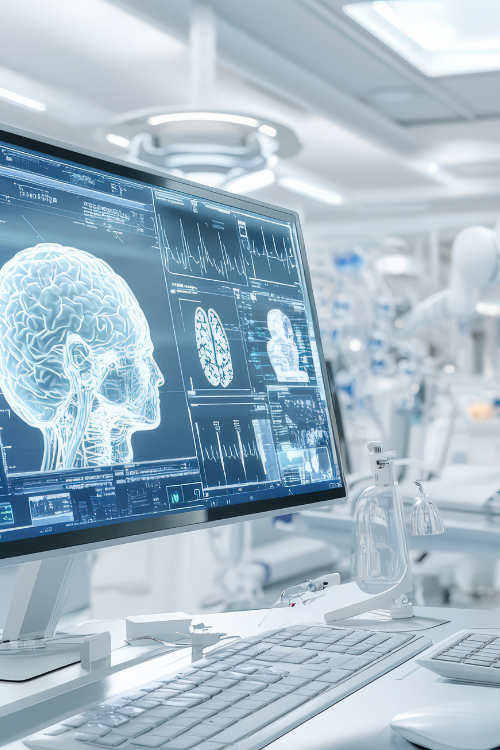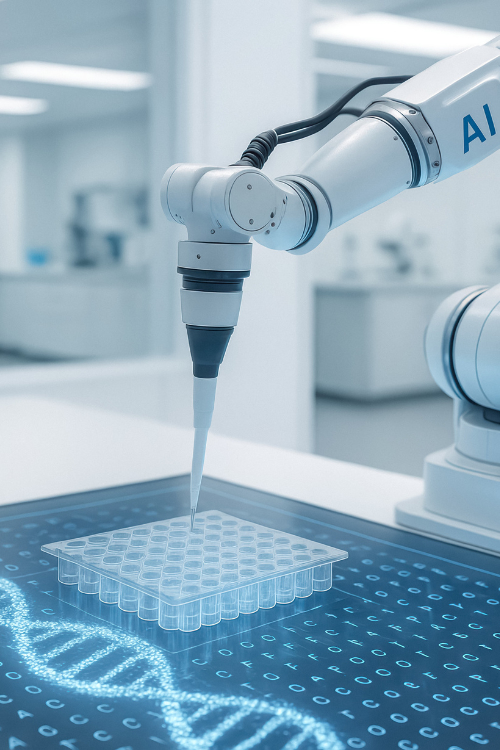6 trends of digitalization in the life science industry
Digitalization has been renewing the life science industry for several years. Accordingly, the bio, medical and pharmaceutical industries must come to terms with new technologies. On the one hand, efficiency and communication with patients are being revolutionized. On the other hand, it means regulating concerns about data security. This applies to both companies and patients, and sometimes obscures the achievements. Finally, it means companies have to look hard at new technologies and alliances to stay competitive.
After all, the competition is fierce and so is the scope of . From research to automated management to digital supply chains, digitalization is taking many paths, as the following graphic clearly shows.
We follow some of them as examples.
.jpeg)
At the same time, the amount of paths also shows the amount of data that is generated and, in its speed and variety (Big Data), can now only be bundled and coordinated with artificial intelligence (AI). Being able to master data is a great advantage for the visualization of studies and, for example, for "predictive analytics" in research and development.
Data-based research and development
Predictive analytics uses data, statistical algorithms and machine learning to determine the probability of future outcomes based on historical data. The goal here is not only to know what has happened, but also to provide the best possible estimate of what will happen in the future.
Predictive analytics offers the pharmaceutical industry the ability to provide outcomes, drug tolerability and ultimately personalized medication.
Cleverly programmed AI can make connections that a linear-thinking human might not recognize. Thus, the diagnosis of skin diseases, for example, can be facilitated.
The situation is similar with another tool of digitalization, the digital twin. A digital twin is a virtual representation of a physical product, process or system.
With a digital twin, a drug can be tested for tolerability and efficacy in silico, i.e. on the computer, as opposed to in vitro (in an experiment) or in vivo (in a living organism). This will make animal testing avoidable in the future. Moreover, artificial intelligence can be used in this digital twin to force autonomous decision-making processes.
The digital twin can take into account various parameters such as chemical structure, pharmacological properties and interactions with biological systems. This also reduces the need for expensive and time-consuming laboratory testing. It favors the emergence of lab 4.0.
Lab 4.0
The term Lab 4.0 refers to the integration of digital technologies in pharmaceutical laboratories. This includes the use of automation, robotics, AI and Internet of Things (IoT). By using these technologies, workflows can be automated, accuracy increased, and human error minimized. A Lab 4.0 thus also enables real-time monitoring of lab processes, collection and analysis of large amounts of data (Big Data), and modeling of experiments.
This enables companies to increase efficiency, achieve faster results and improve quality assurance.
This is where R&D (research and development) intersects with Production & Quality, to return to the illustration. And it extends to marketing, which also includes compliance rules that prescribe what may be advertised or communicated and how.
Legal principles play a major role, especially in the pharmaceutical industry, and must go hand in hand with new technical developments.
Compliance and pharmacovigilance
Standard operating procedures (SOPs) are elementary in pharmaceutical companies because all procedures and processes for the production of drugs and pharmaceutical substances must be precisely documented.
Here, too, digitalization offers great help. At the same time, not only the pharmaceutical manufacturing processes, but also the digital processes themselves must be protected.
GMP (Good Manufacturing Practice) is an internationally used seal of approval designed to regulate the production of pharmaceutical, food and cosmetic products. GMP and compliance require ensuring data integrity and security. This includes measures such as access controls, encryption, data backup and recovery, audit trails (computer-generated logs), and regular review of systems and processes. Protecting data from unauthorized access or loss is critical to ensuring the quality and safety of medicines.
Legal liabilities are also high in the pharmaceutical industry when it comes to post-marketing care. According to §63b of the German Medicines Act (AMG), pharmaceutical manufacturers must set up a system to monitor medicines they manufacture (pharmacovigilance system).
Here, for example, a digital twin can help monitor anomalies and deviations in real time. This enables early intervention to prevent potential quality problems and ensure compliance.
All of this ultimately creates post-market safety for patients and, moreover, the possibility of personalized patient communication, which is becoming increasingly important.
Personalized patient communication
In the future, due to the wealth of available data, algorithms will be able to help physicians create individualized risk profiles and personalized treatment plans. This can significantly improve the effectiveness of treatment.
At the same time, communication itself can also take place digitally.
Telemedicine applications range from remote consultation to remote monitoring of patients. People in rural areas, for example, can benefit enormously from this.
Delivering the right medicines to remote locations is another supply chain challenge that digitalization can address.
This is where the aforementioned paths intersect with the supply chain.
Digital supply chains and warehousing
Overall, the pharmaceutical industry has complex supply chains that require precise coordination. A digital twin, for example, can help track and optimize the flow of drugs and raw materials. By integrating data from multiple sources along the supply chain, the digital twin can identify bottlenecks, delays and potential risks. This enables improved planning and more efficient inventory management.
Or, by using track-and-trace technologies, companies can follow the path of a drug from manufacturer to patient. This enables contactless and seamless traceability and protection against drug counterfeiting, for example, through RFID (radio frequency identification) technology. In addition, the use of real-time data enables optimized inventory management and better forecasting of demand to avoid bottlenecks.
Many companies are already investing in supply chain optimization.
So it is important for policymakers to ensure these digital achievements also apply to patient contact.
The future of patient care and research through electronic patient records (ePA)
The electronic prescription is to be made available by the beginning of 2024 in Germany and the ePA is to become mandatory by the end of 2024. Data will remain under the control of patients, who will be able to consent to who gets access.
Of course, data privacy concerns must be taken seriously, and the Health Research Data Center has been introduced as a neutral body to release pseudonymized health insurance data for research upon request with the Health Data Use Act (GDNG).
With this and the ePA, Germany is slowly joining the leading European countries and also the plans of the European Union. This is because the Data Governance Act (DGA) came into force in 2022 and will apply in every European country in the fall of 2023. This means that data exchange can be simplified internationally.
If - also internationally - data from medical records and disease histories can be used in bundled form, this will offer unique opportunities for research and personalized healthcare.
To date, only 1% of those with statutory health insurance in Germany use electronic patient records (ePA). Skepticism must be dispelled to remain competitive.
Israel's healthcare organization Maccabi, for example, has been relying for years on an algorithm-driven database that pools all the disease data of the Israeli population. With Big Data, artificial intelligence and connectivity, this makes it possible to individually predict a risk of colorectal cancer, for example. Israel has also been collecting a huge pool of data with it since as early as 2019. Germany will offer a major advance for the pharmaceutical industry with the optional use of data from the ""ePA for all" from 2024.
Outlook for Pharma 4.0
These six paths to digitalization are just a few examples of how medicines will be manufactured, prescribed and distributed in the future. The pharmaceutical industry is already undergoing a fundamental transformation that will ultimately help improve patient care.
Major challenges remain the protection of sensitive data of treated persons, the security of the digital infrastructure and, time and again, the shortage of skilled workers. For this, it is important to offer training and to ensure that employees are up to date and retained in the company or the industry.
Finally, sustainability must also be taken into account. After all, with the shortage of raw materials, the pharmaceutical industry will have to become independent of fossil fuels. In addition, the chemical and pharmaceutical industry has made a voluntary commitment to become climate-neutral by 2050, according to the German Chemical Industry Association.
But here, too, digitalization can support the processes and thus forms a good outlook for the future of the pharmaceutical industry.

.jpeg)




